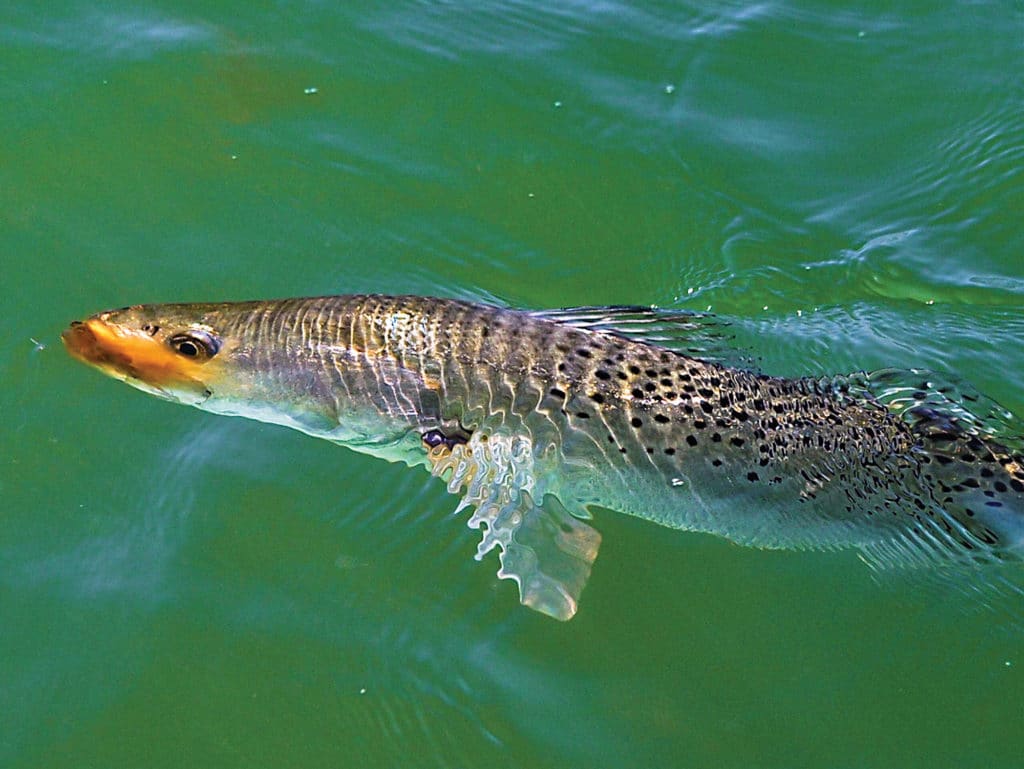
A species that is plentiful and eager to strike flies has to be included in a fly angler’s list of favorites. Case in point, the spotted seatrout, better known as speckled trout throughout the Gulf Coast, is neither the largest fish nor the hardest of fighters, but it often saves the day when more glamorous game manages to evade us. And a day targeting trout specifically is both fun and exciting.
With winter upon us, falling water temperatures perk up the trout. In both Louisiana and Texas, shrimp runs turn on the trout bite in a big way. Along the Atlantic seaboard, baitfish migrations send a plethora of prey — such as mullet and scaled sardines — into coastal bays, and hungry trout wait in ambush around oysters bars, dock pilings and grass flats.
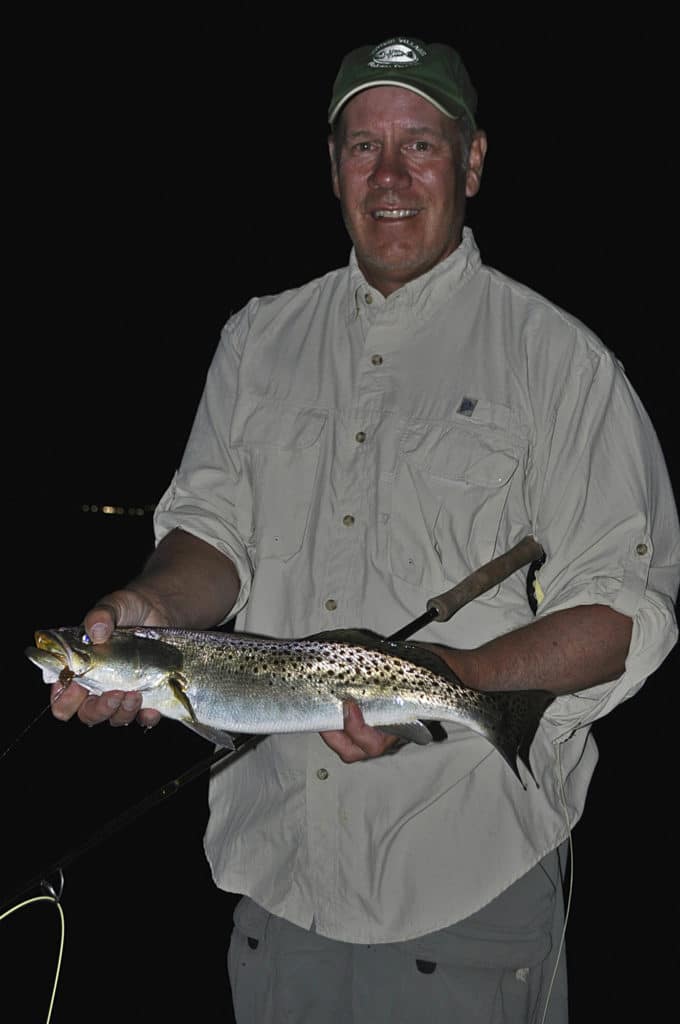
You choose the scenario: flinging a Clouser Minnow into a channel to bang on schoolies, casting a popper or deer-hair bug at dawn over grass for topwater thrills with trout of all sizes, or wading quietly in shin-deep water for the big “gators.” Chances are trout will come out to play.
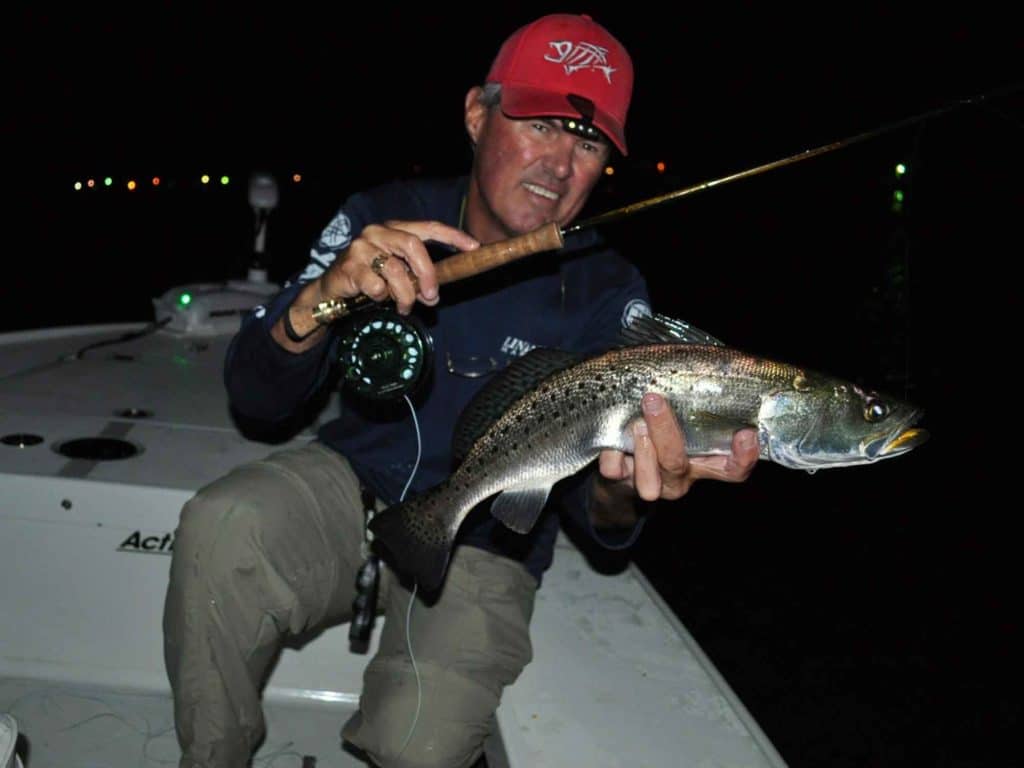
TACKLE AND LINES
While 5- to 7-weight rods help make the most of fights with trout, remember it’s the bulk and the weight of the flies that best dictate the proper rod and line size. If you are lobbing heavy or air-resistant flies, don’t struggle with light rods. An 8-weight effectively handles most streamers and poppers.
Carrying a pair of rigged outfits, one with a floating line and another with an intermediate sinking line, lets you cover enough of the water column. I’ve had great success casting topwater and subsurface flies with clear floating lines, such as Cortland’s PE+ Liquid Crystal. They’re excellent for prospecting in clear water or bright, sunny days. But on days when the trout go deep, you’ll fare better with a line that sinks at 3 to 5 inches per second.
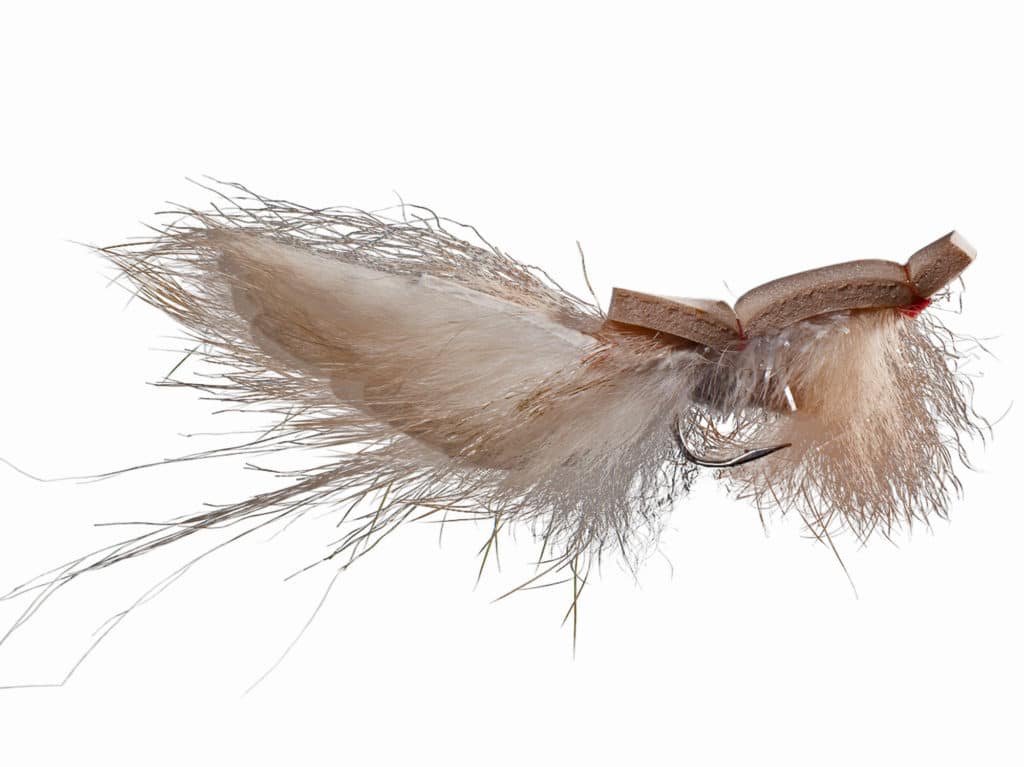
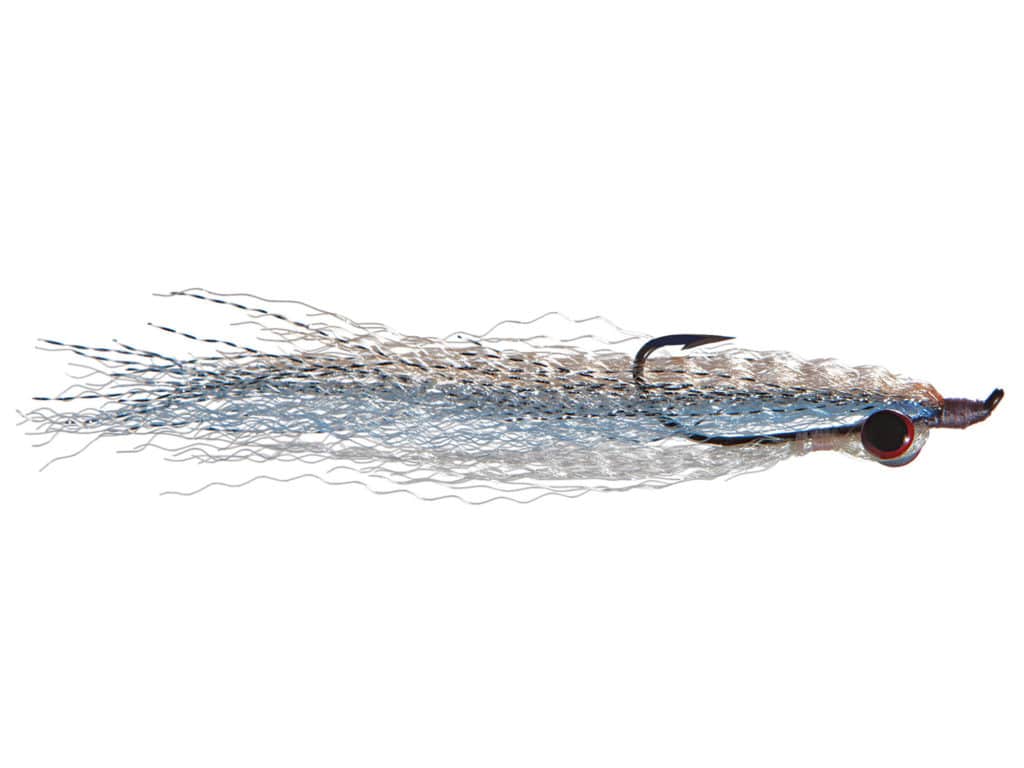
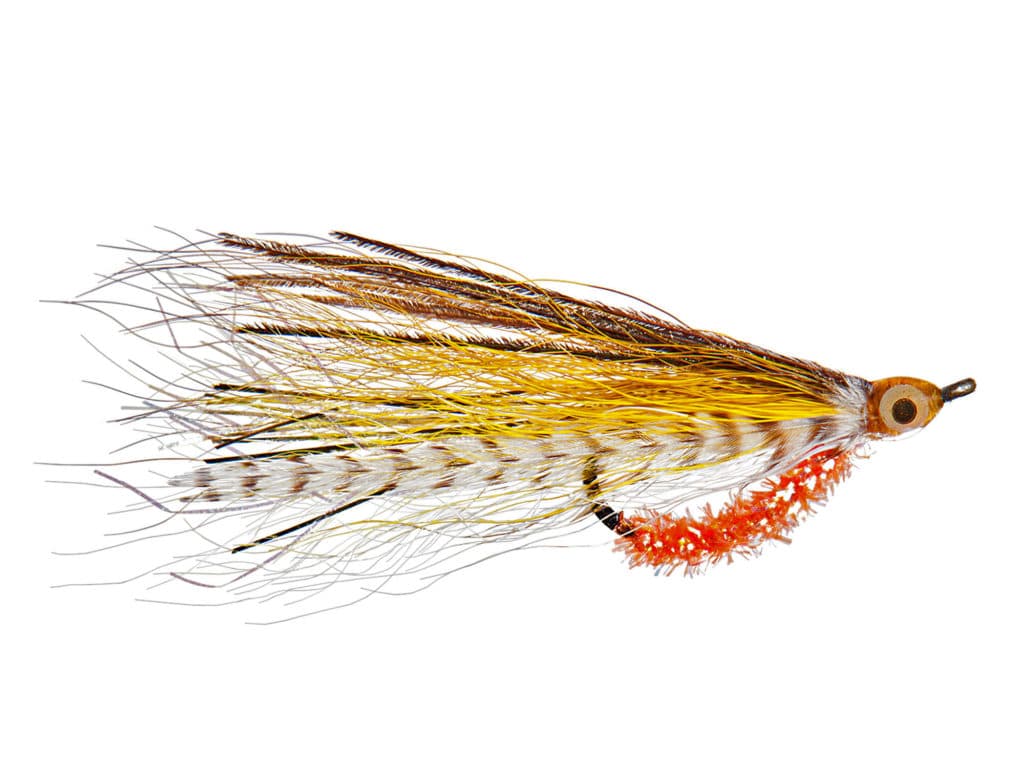
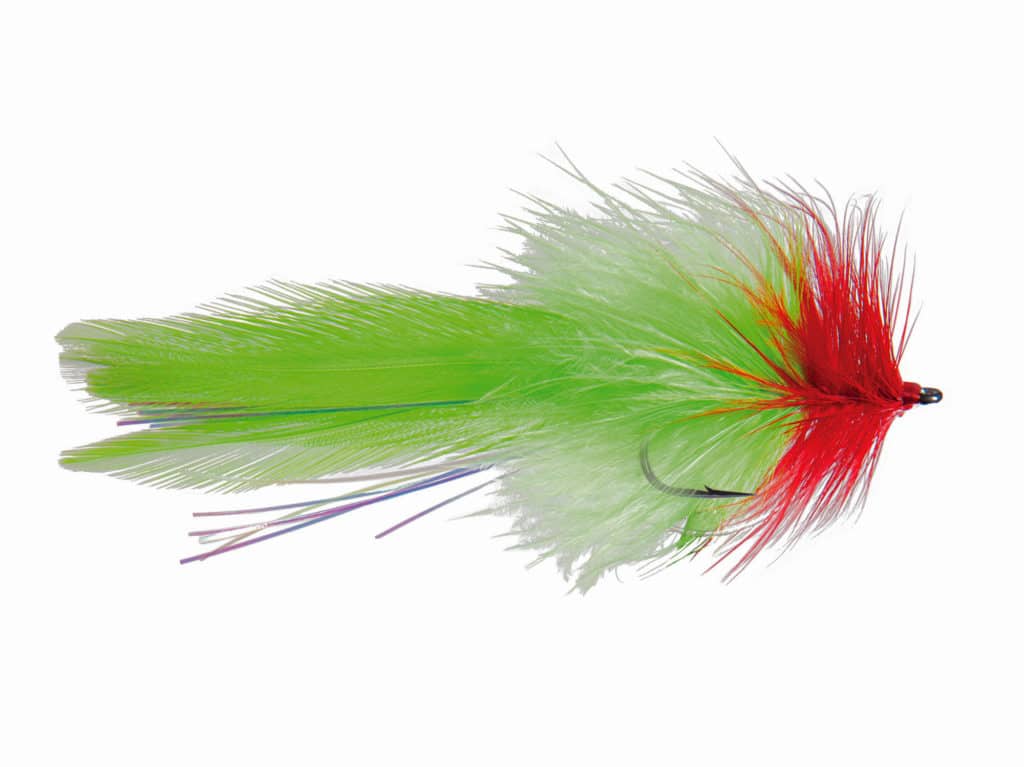
FLY SELECTION
Small seatrout mostly target shrimp, but they increasingly feed on finfish as they grow. So a good trout fly selection includes patterns that mimic both. Hook sizes run from No. 6 or No. 4 for flies that imitate tiny prey to 2/0 or 3/0 for big mullet patterns to tempt those big gator trout. A 10- to 12-pound fluorocarbon tippet on the end of a 7- to 10-foot tapered leader should suffice. But for sinking fly lines and flies, you can go as short as 4 to 5 feet.









